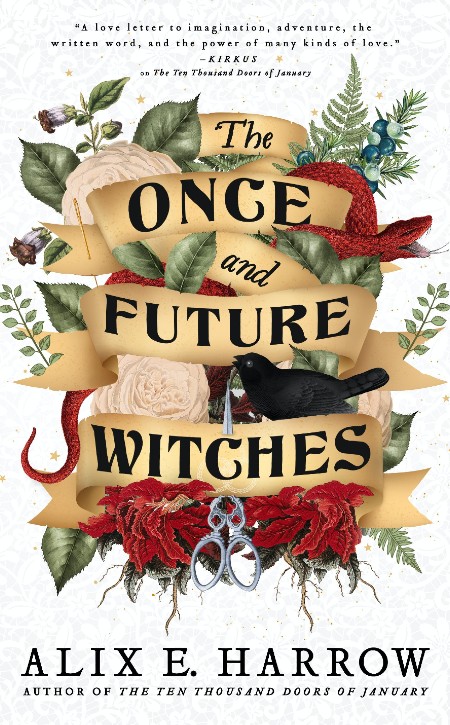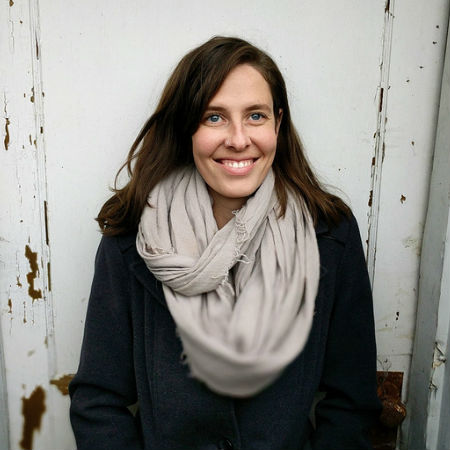
After what has been by any measure the year from hell, where reality’s failings have been laid bare without fear or favour and without the hint of an apology, you could be forgiven for wondering if there is anything good or just left in the world at all.
Everywhere you turn, COVID-19 is exposing the inequities of many societies, and how those at the top of the heap have a far better chance of surviving the disease and all its attendant economic and social miseries than those who reside in its abysmally neglected depths, including working class women, minorities and anyone who doesn’t fit the mainstream ideal.
Is there any hope of rectifying such wrongs or are we doomed to live in this broken world without any recourse for justice or salvation?
Alix E. Harrow, who gave us the superlatively engaging delights of The Ten Thousand Doors of January, dares to walk into the glowering gloom of 2020 to think, with arresting vivacity and boldness, that not only is justice and the prevalence of rightness still a possibility, but that it might come about from the most ancient and magical of means.
In The Once and Future Witches, Harrow, who possesses an insightfulness about the human condition and a luxuriant ability to write about it perfectly that makes the heart sing with recognition, explores what happens to three sisters when they find out that magic and the rich transformative possibilities that flow from its limitless reaches has not yet departed the earth and may have a key part to play in them righting a list of seemingly neverending wrongs done against them.
“She [Juniper] thinks a little bitterly of all the lofty reasons she wanted to restore the Lost Way – to reclaim the power of witches for all womankind, to break the shackles of their servitude, to set this whole damn city on fire. And in the end she’s going to do it because she wants to save her dumb-shit sisters, who are only doing it to save her in turn.” (P. 252)
Possessed of given names and “mother’s names” which are the secret names given by the maternal side of the parenting equation to their children as a way of imbuing them with access to a world that exists within and without our own, Beatrice Belladonna, Agnes Araminta and James Jupter (in order of age) have endured far more than their share of misery and heartache.
Now resident in New Salem, the replacement town for the “wicked” old town of Salem which was burned to the ground in Harrow’s reality during a frenzied campaign against perceived Satanic evil, the three sisters are not in contact and have no idea each is in the city until a magical event one night, inadvertently triggered by librarian Beatrice as she reads an ancient text, summons them as if by magic to the central town square wherein appears, briefly and not fully, a mystical rose-climbed tower called Avalon (the physical manifestation of the Lost Way of the same name).
Quite apart from its Brigadoon-like ability to appear and disappear when summoned, but only by witches and only if they are in possession of some very specific words, Avalon represents something altogether more powerful than simply reuniting three schismed sisters – it offers downtrodden women everywhere the chance to seize power that has either never been theirs or which has been taken from them by a cruelly patriarchal society that sees them as lesser than and not worthy of the rights and privileges afforded to their husbands, brothers etc.
Bella, Araminta and Juniper, who increasingly switch to their secret names because of the power the names encapsulate, recognise the opportunity afforded to them by embracing their witchy heritage and with varying degrees of enthusiasm at first – impulsive, fiery, fearless Juniper is all in immediately, careful, literary Bella is more reserved while Agnes, regarded as the strongest of the three steps back after a brief dalliance – set out to bring magic back to a world sorely in need of some reality-busting witching.

The reason this is so attractive to the three sisters, who must work hard to resolve past grievous pain and loss and the relational rifts it has caused them and reunite to fully claim their magical heritage, and just as importantly reclaim their once-tight sisterly bonds, is that the society in which they live is manifestly titled towards favouring white men with a great deal of power and money.
Sadly, very little has changed from the 1890s in which The Once and Future Witches and many of the issues the Eastwood sisters battle against remain stubbornly entrenched today.
One thing that has changed for the better is that women have been given the right to vote, something which it may shock you to learn, is seen as part of the Satanic agendas of the witching women of New Salem, as are the professions of midwifery and a number of other modern parts of society that were seen by the conservative powers that be of the day as a departure from the narrow path to Godliness.
The figurehead for these recalcitrant forces is Gideon Hill, a man who is running for mayor and may not be as squeaky clean nor as much on the side of God as he appears to be.
In fact, he fast emerges as this book’s Big Bad of sorts but the Harrow is too clever and sophisticated a storyteller to simply paint him as obviously evil and the girls are purely perfect.
“The Sisters rarely congregate, these days. They speak instead by mockingbird and smoke-signal, by letters that can only be seen by friendly eyes and notes that ignite after reading. They meet only for furtive exchanges of spells and safe houses and disperse before they can be found by the things that hunt them: the mobs of men with brass badges and torches, the steel-jawed officers on white horses, the eyeless shadows that twist up from sewer grates and reach after them.” (P. 354-355)
That’s not to say that he isn’t agent for all that is wrong with the world and there is precious little in his person that you will be find welcoming and worthy of empathy, and it is clear that the Eastwoods have might and right on their side, but Harrow handles their stories in such a way that the tale told is meaningfully moving and thoughtfully sophisticated, a pleasing deep into the best and worst of humanity that just happens to come with some brilliantly well-realised fantastical elements.
At its heart, The Once and Future Witches celebrates the power of women to make real lasting change in a world that too often leans towards the brutal practicalities of things but fails to remove that at the heart of everything there are people whose rights and needs must be respected.
They certainly weren’t in the 1890s and in many years still aren’t today and women continue to bear the brunt of many of these trenchant injustices and cruel attacks on their persons.
The Once and Future Witches is a mighty declaration by women of their rights and freedoms, of their immense and transformative capacity for real humanistic change and their capacity for considering the needs of those who too often are trampled underfoot in the rush for power and money.
As fantasy tales go, The Once and Future Witches is a triumph.
It is astoundingly, heartbreakingly and utterly immersive storytelling, filled with vibrantly intense and relatable characters, an insightfulness about the horrific gaps in society that allow far too many people to fall through the gaps and a celebration for the power of women in particular to change the world for the better. (Whether by magic or not, though it has to be said that the magical elements are stunningly, darkly, beguilingly good in a book gloriously replete with it).